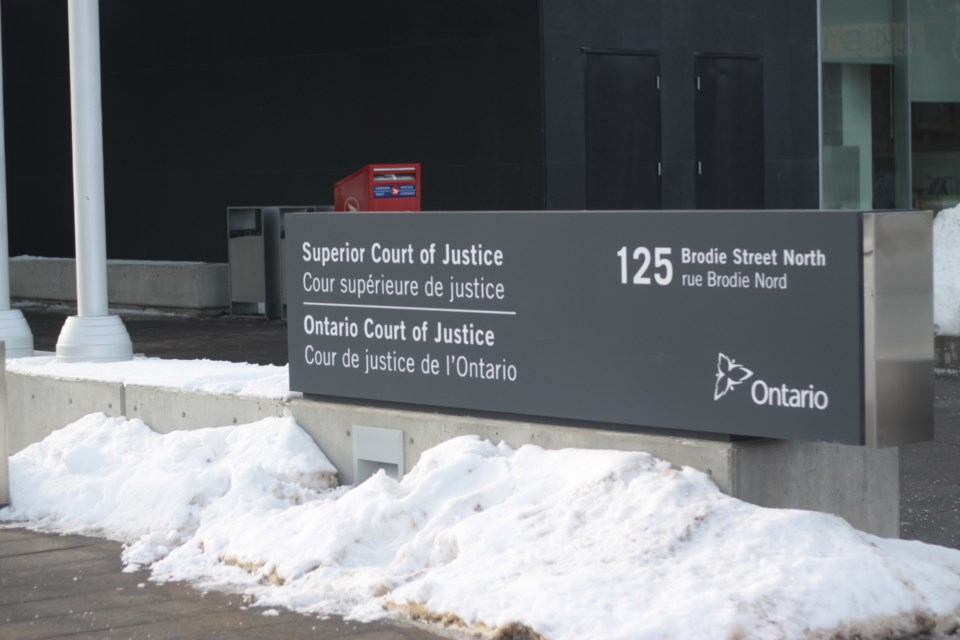THUNDER BAY – George Gerard suffered as many as 90 injuries to his head, face and neck – including multiple facial fractures – immediately prior to his January 2016 death.
The 60-year-old was allegedly fatally assaulted by Nicholas Necan, who is standing trial for second degree murder, inside a unit at the Casablanca Apartments complex on North Simpson Street on Jan. 28, 2016.
Gerard’s death was caused by a combination of blunt impact face and neck trauma, aspiration of blood and subsequent blocking of the airways, alcohol intoxication and hypertensive heart disease, forensic pathologist Dr. Kona Williams testified on Friday.
Crown prosecutor Gordon Fillmore asked whether Gerard would the assault would have been fatal had the intoxication and heart condition not contributed.
“These were fairly significant injuries that would require immediate medical attention,” Williams said.
“I’m not sure he would have survived.”
The autopsy revealed a number of broken facial bones, including two fractures to his left cheekbone, one fracture to his right cheekbone, a fractured jaw, multiple breaks to the nose and multiple fractures to the left eye socket.
Gerard also sustained several fractures to the bones and cartilage of his larynx, an injury that Williams said would make it difficult to keep his windpipe open to breathe.
Williams said Gerard had suffered multiple bruises, cuts and scrapes to both of his arms, including a fractured right elbow. She characterized those as “defence type injuries,” likely to be sustained when a person raises their hands and arms to protect vulnerable areas of the body like the head.
Thunder Bay Police Service Const. Matt Hanchuk earlier this week told the court Necan was using a piece of wood to beat a man on the floor and officers had to use pepper spray to stop the attack.
Defence lawyer Neil McCartney, who suggested there were as many as 90 injuries to the victim’s head, face and neck areas, asserted that one physical impact could cause multiple injuries.
Williams agreed it was possible, responding that she could not determine how many blows were delivered to the victim.
McCartney also asked whether a determination could be made that any of the identified contributing factors had a greater role in causing Gerard’s death.
“All four of those contributed to his death,” Williams said.
OPP Const. John Frankcom, a blood stain pattern analyst, studied the crime scene and concluded that evidence indicated the source of blood responsible for a number of the stains would have been at or near the floor level.
As well, Frankcom said two cast-off patterns of Gerard’s blood found on the apartment’s walls were the result of the victim’s blood coming off an object that was moving in a downward direction. Another cast-off pattern of Gerard’s blood on the living room ceiling would have also come off an object in motion.





